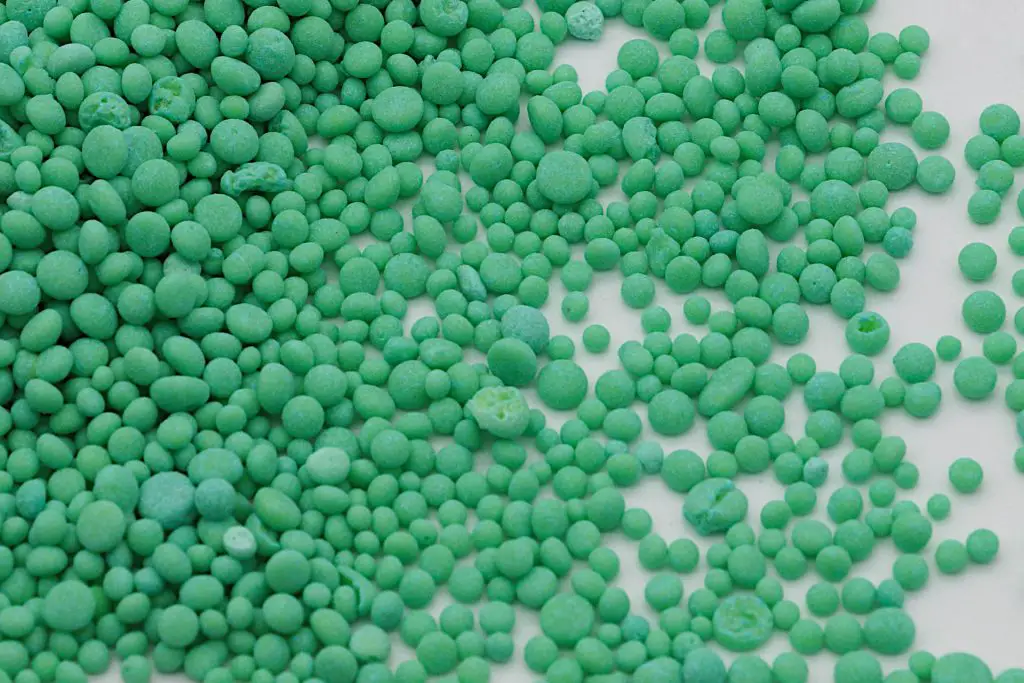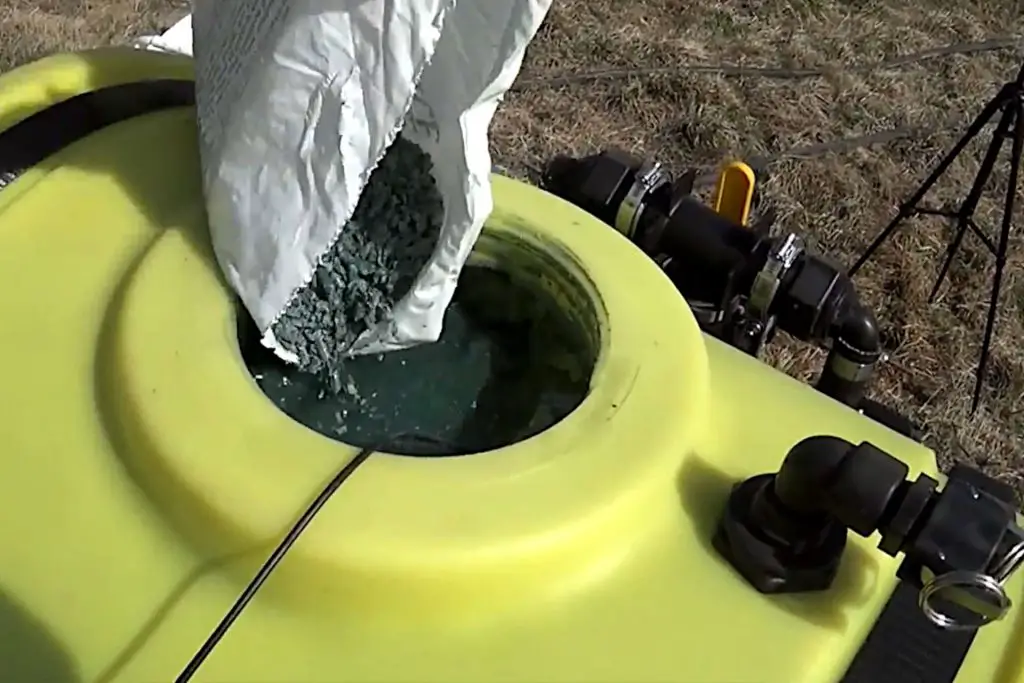Hydroseeding Fertilizer: What Type of Fertilizer is Best for Hydroseeding?
One of the main components of a hydroseed mix is the addition of fertilizer. There are many types of fertilizer available for hydroseeding. In theory, you could use pretty much any fertilizer in your mix, however, in practice, some fertilizers will work well with hydroseeding while others less well.
What you can get away with using and what is best are clearly two different things. There are certain factors to look out for when considering which fertilizer is the best to use. These include the quality of the soil you are hydroseeding on, speed of grass establishment, climate and availability
There are also other factors that are likely to come down to personal preference, such as organic or synthetic fertilizers, as much as effectiveness. We will look at these factors and how they shape the choice of fertilizer that will work best for your hydroseeding project and how this choice will affect the choice and the timing of fertilizing the new lawn the post hydroseeding.
Organic vs Synthetic Fertilizers for Hydroseeding

As already mentioned, it is possible to get away with virtually any type of fertilizer but for the best long term results, choosing the right one can make a big difference. There are various types of fertilizers that you can consider some will work better than others in given circumstances.
Fertilizers fall into two broad categories, organic fertilizers and synthetic fertilizers. When deciding which type of fertilizer to use in your hydroseeding mix, you will need to consider how the fertilizer affects both your soil and the plant. Both organic or synthetic fertilizers have nutrients but synthetic has more control over the ratios.
Synthetic fertilizers are made up of chemicals that provide nutrients to plants. They’re often used to speed growth and increase crop yields. However, synthetic fertilizers can be less effective at developing the soils ecosystem in feeding soil organisms, improving soil structure, or increasing soil quality over the long term.
On the other hand, organic fertilizers are made up mostly of naturally occurring elements found in the earth. These elements are broken down into smaller pieces and absorbed by plants through their roots. Organic fertilizers help build soil health and improve soil structure over the long term. But they take longer to break down and release nutrients into the soil.
So, which type of fertilizer is better? That depends on your goals. If you want to grow the grass quickly, then you may want to use a synthetic fertilizer. But if you want to feed the soil ecosystem which should lead to healthier grass over the long term, then you might consider a high quality organic fertilizer.
There are other factors such as the environmental impact of synthetic fertilizers as opposed to organic. This is probably going to come down to personal choice.
Slow-release vs fast-release fertilizers for use in the hydroseed mix
Beyond the choice of whether you are going to use organic or synthetic fertilizers, the next factor will be whether you are going to use fast release (often referred to as starter fertilizers) or slow-release varieties.
Both of these options have benefits depending upon the specific site circumstances. They can also impact the application and timing of fertilizing post hydroseeding, as part of the after hydroseeding care package that you recommend.
The difference between the two is that slow-release fertilizers will gradually release nutrients over an extended amount of time whereas, fast-release fertilizers dissolve very quickly in the soil and provide nutrients within hours.
In general, both varieties of fertilizers can work well for new lawns. Slow-release allows the grass to grow slowly without being affected by weed competition. In contrast, fast-release fertilizers are perfect for established lawns. They provide nutrients to the grass quickly, allowing it to grow faster.
Using Fast Release Fertilizer in Your Hydroseed Mix
Which type you use will largely depend on your objectives. It is quite common with hydroseeding to want to establish the lawn as soon as possible. This tends to mean leaning toward starter fertilizers that will deliver nutrients fast and promote quick growth.
If using this strategy then, you will almost certainly need a second fertilizer application around a month after the slurry (the material produced from mixing the hydroseeding components) has been put down on the ground.
One of the reasons many contractors choose fast-release fertilizers for hydroseeding is that they speed up top (plant) growth. This will give a quicker result with a good dark green color, generally pleasing the customer
The downside is this can be at the expense of root establishment, which can have long term effects on the quality of the lawn. This can be mitigated to some extent by using use low nitrogen phosphorus-rich starter fertilizer such as 10-52-10 (nitrogen, phosphorus, potassium ratio)
Using Slow Release Fertilizer in Your Hydroseed Mix
The second option is to use a slow-release fertilizer. This can be advantageous if the soil you are hydroseeding is already nutrient-rich. This will mean that a second fertilizer application is not required for some time, probably around three months after the slurry is laid down.
The ground, being already nutrient-rich will be able to help establish the seed while the nutrients will continue to be released into the soil over the next two to three months.
You should always take and test soil samples from the ground that you are going to hydroseed. These results will help you decide which method is most suitable for each project.
Perform a soil test

It will probably be clear by now that soil quality impacts your fertilizer choice. Soil testing is therefore a crucial part of the preparation process. It will provide you with so much information not just in terms of the right fertilizer to use but also in terms of helping foresee any problems seed and mulch will have.
Most grasses flourish where the soil pH is between 6.5 and 7. Fertilizer, together with lime supplements, organic material, or sulfur, depending on its pH level can help rebalance your soil’s pH. There are plenty of places where you can buy soil testing kits both at local garden centers, or online.
The tests to use are those that require you to send away the samples to the local cooperative extension office; the results will be returned usually within a week or so. These tests will not only provide the pH level but will include the make-up and nutrient levels contained in the soil. You can get pH soil testers but these don’t give you any information in terms of nutrients, which is important for fertilizer choice.
Constituents of a fertilizer that can affect hydroseeding?
We have looked at fertilizers on a broad level be they organic or synthetic and whether they are fast or slow release. There are though other factors in the make-up of a particular fertilizer that can affect your decision to use it.
Fertilizer’s Salt Index
It is important to understand that fertilizers are all salts, with some containing more sodium than others. In terms of salt index, muriate of potassium (MOP) registers only fractionally less on the scale than sodium chloride and is frequently marketed in stores under the name Lite table salt.
To put this into perspective MOP registers on the salt index at 116, which is almost three times greater than that of sulfate of potash (SOP), which registers at 43 on the index.
This is important for two reasons,
- fertilizers that contain salts with a high salt index can delay or prevent seeds from germinating (because salt leaches moisture from the ground).
- the salts are a key source of potassium that is delivered to the soil.
It is therefore advisable to try to use a fertilizer that is rich in sulfate of potash as this would be a better source of potassium.
Another common fertilizer salt to look out for is Urea N. This provides a rich source of nitrogen. However, though its salt index of 75 is less than that of MOP, it has a propensity to evaporate off the soil, particularly in hotter weather or climates and this process can lead to the seeds being damaged or destroyed before they have time to establish.
Although an important nutrient for the soil too much nitrogen in the fertilizer can destroy the seed. A better choice for the nitrogen would be to use a fertilizer with ammonium nitrogen, particularly as with the hydroseeding process you are directly mixing the fertilizer with the seed and water.
The effect of hydroseed mixing on fertilizer

The mixing is an important point because by mixing the fertilizer with the water, seed and fiber you are changing the way the fertilizer usually would interact with the soil. When fertilizer is added to the soil in its dry form the process causes friction as it hits the ground helping the start the release of nutrients.
Although there is no reason why you can’t use normal fertilizer in your hydroseed mix, it might be better to use a water-soluble fertilizer. These will dissolve in the mix more effectively.
Using Organic Fertilizers in Your Hydroseed Mix
The fertilizers that we have talked about above are synthetic fertilizers. The reason for this is that a lot of organic fertilizers might not have the required nutrients for the soil that you are hydroseeding. In addition, the higher quality organic fertilizers can be more difficult to source and tend to be more expensive, which could certainly impact the cost of large projects.
Summary: What Type of Fertilizer is Best for Hydroseeding
There are many facets in the choice of the best fertilizer for a given hydroseeding project. Your main priority should be to assess the nutrient needs of the soil on a given project and, based on your experience, determine the best fit for the job.
Although this way of working will preclude giving you a standardized fertilizer mix that you can use for every project, it will provide you with the best jumping-off point for ensuring you use the best fertilizer blend for that specific hydroseeding application.
Obviously, you and your client’s objectives need to be considered, but with hydroseeding, the establishment of the grass-root structure should generally trump speed for the long term health of the grass.
If you create an appropriate fertilizer mix that contains the nutrients in the correct proportions for the soil’s needs, then it will have all the required nutrients to get the grass established. You can then focus on the follow-up fertilizations in the hydroseeding aftercare period to meet the plants’ long-term nutritional requirements.
Commonly Asked Questions
What do the numbers on fertilizer mean?
The three numbers 10-5-5 that are printed on fertilizer sacks refer to the nitrogen, phosphorus and potassium (NPK) ratios of the fertilizer contained within. There is a multitude of different ratios and you choose the NPK ratio based on the application purpose. 4:2:1 is a general common purpose ratio.
